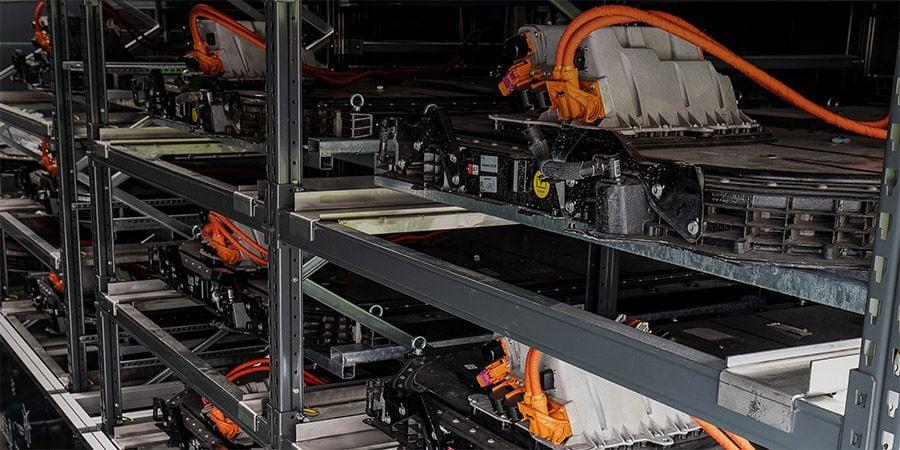Together with Audi AG, we have launched a storage facility with a capacity of 1.6 MWh made from used test vehicles. This will be used to test various scenarios involving electric vehicles and the energy grid.
Energy transition through second-life batteries
Audi electrifies the capital: As part of the 2019 Formula E guest appearance in Berlin, the brand with the four rings and we opened Germany's largest multi-use storage facility on the EUREF campus. The storage facility, with a capacity of 1.6 MWh, uses used lithium-ion batteries from test vehicles and tests various interaction scenarios between electric vehicles and the energy grid. The goal: intelligent networking to promote the energy transition.
Update: A field trial will start in 2022 to demonstrate the revenue opportunities offered by bidirectional charging of electric cars. More on this below.
"With its expertise in the field of second-life storage, The Mobility House made a valuable contribution to the successful implementation of the project."
Alexander Kupfer,
Project Manager Audi AG
A cornerstone of the power grid of the future
Our intelligent technology controls the battery storage system and implements the interfaces to the energy market and neighborhood applications. The software used adapts the charging and discharging behavior to the requirements of the EUREF campus and the power grid.
Electric car batteries with revenues in the energy market
In future, surplus electricity from renewable energies – especially from wind turbines in northern Germany – will also be stored, thus preventing curtailment.
Overall, the real-world laboratory provides us with extremely important insights into the diverse integration of electric car batteries into the energy market.

Update 2022
- VG1 and V2G real-life tests have been taking place since 2022
- Objective: To demonstrate the revenue potential of EVs in short-term electricity trading on the EPEX Spot under real-life conditions and restrictions.
- Use of batteries taking into account standard “driver profiles,” vehicle owner preferences (SoC), and restrictions regarding battery life.
First success in field trial 2022: Marketing under real conditions
In the first half of 2022, we demonstrated that bidirectional charging can generate tangible revenue in the energy market: In the trial, 18 AUDI e-tron vehicle batteries from the stationary EUREF storage facility were treated as if they were being used in mobile electric vehicles. To this end, the second-life batteries were assigned a driving profile based on German average values. Each battery could be charged or discharged at 11 kW during the charging windows and consumed an amount of electricity equivalent to around 18,000 km of driving per year during the driving windows.
At times when the vehicles were usually plugged in for charging, the flexibility offered by charging and discharging the batteries was made available to the energy system. At times when the vehicles were usually driving, they were not available to the energy market. Using our technology, several energy markets were played simultaneously (day-ahead and intraday markets) in order to achieve the best possible values and savings at all times.
What were the revenues from the field trial?
In our trial, revenues in the four-digit euro range were generated per year and vehicle. How were these achieved?
Extrapolated over a year, the revenues on the electricity exchange (EPEX Spot) amounted to EUR 860 per vehicle. If the customer had plugged in and charged the vehicle upon arrival, as is normally the case, this would have cost them EUR 696 per year on the electricity exchange. These costs were saved by optimizing charging at the right or cheapest time. This results in a total value of EUR 1,556 per year and vehicle.
Taking into account deductions in the form of tax levies, among other things, end customers can expect potential savings of at least €650.
%20The%20Mobility%20House_ff5f3aae95153847ac588aa5d990a011.jpg&w=3840&q=75)